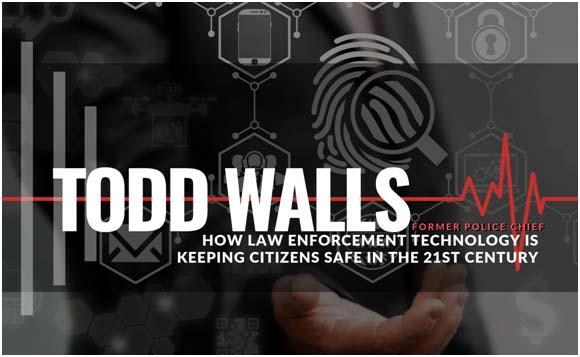
With a two decade long law-enforcement career that has ranged from patrolling the streets to serving as the chief of the West Buechel Police Department, Todd Walls knows that law enforcement technology has to keep up with the times to stay ahead of crime.
Some of these newer technologies may seem like they're from the future, but police in Kentucky and beyond are already using them to help prevent crime and track down suspects. From modern advancements, to imaging, to tracking vehicles attempting to flee the scene, technology has played a major role in helping police officers do their job to the fullest.
Embracing Advancements in Imaging
Camera-based technology is being used to more effectively to find criminals on the road. License plate technology allows officers to take a picture of a plate, and then easily compare it against a database to see if any action is required. This makes apprehending suspects faster and easier.
Cameras not only help identify suspects, but can also help keep officers safe. Todd Walls states a great example of robotic cameras being used by police forces are the ones used to scope out situations that are high-risk before going in. By sending in robots, police can have a better look at a suspicious package to address the threat from a safer distance.
Thermal imaging has also risen in popularity in the world of law enforcement. It allows officers to detect objects and movement using thermal cameras that shows areas of heat and cold. This is handy, for example, when looking for a suspect that may be hiding behind a barrier. It could also help identify people that need help in an emergency.
And don't forget drones – they're not just a recreational hobby. Police are using them as a way to track a scene from the air, and drones can fit into areas that are hard to reach for officers. They can also take photos to use as evidence later.
Scouring Social Media For Clues
Social media use is an ever-growing beast. Todd Walls notes that estimates say almost 70 percent of Americans are using social media in one form or another on any given day. So it's probably no surprise that police use social media as a way to track suspects or parolees based on the activity that they publicly share.
Police can solve crimes using data collected from social media sites, while also using this information to stop crimes before they take place.
Using Biometrics for Faster Identification
Everyone has unique traits such as their fingerprints and retina right down to their DNA and genetic makeup. While identifying people using these methods is not new, the way data can be collected and analyzed is becoming much faster and more accurate thanks to improving technology.
No longer do officers rely on fingerprint cards. Todd Walls explains that law enforcement can now carry handheld scanners to identify if someone has a criminal history. These scanners are often built into laptop computers for an added measure of security.
Tapping the Power of Tablets
While you may only use your tablet to watch videos or browse the internet, law enforcement officials are taking tablets one step further. A tablet allows an officer to communicate with someone who doesn't speak English, for example. They can also be used to electronically create tickets and file accident reports without having to return to their desk.
From the tablet, an officer can also quickly recall a photo of a suspect, or access information from a central database while at the scene.
Keeping Up Without a Pursuit
Car chases are one of the more glamorized aspects of policing from shows and movies. However, police forces are actually trying to move away from the model of chasing a vehicle with a pursuit car and helicopter and letting technology handle more of the work.
Todd Walls explains that GPS pursuit darts could be fired at a fleeing vehicle, and once it sticks to it, can track the movement of the suspect so they are more easily and safely apprehended without a chase, increasing safety to the public and the officers.
Todd Walls’s Final Thoughts on Law Enforcement Technology
The current and future of law enforcement technology continues to evolve to give officers an edge. Todd Walls learned the power of new some of these police tools when he enforced laws, while also tracking down suspects and helping to put away drug dealers. Read more about his long and successful career.